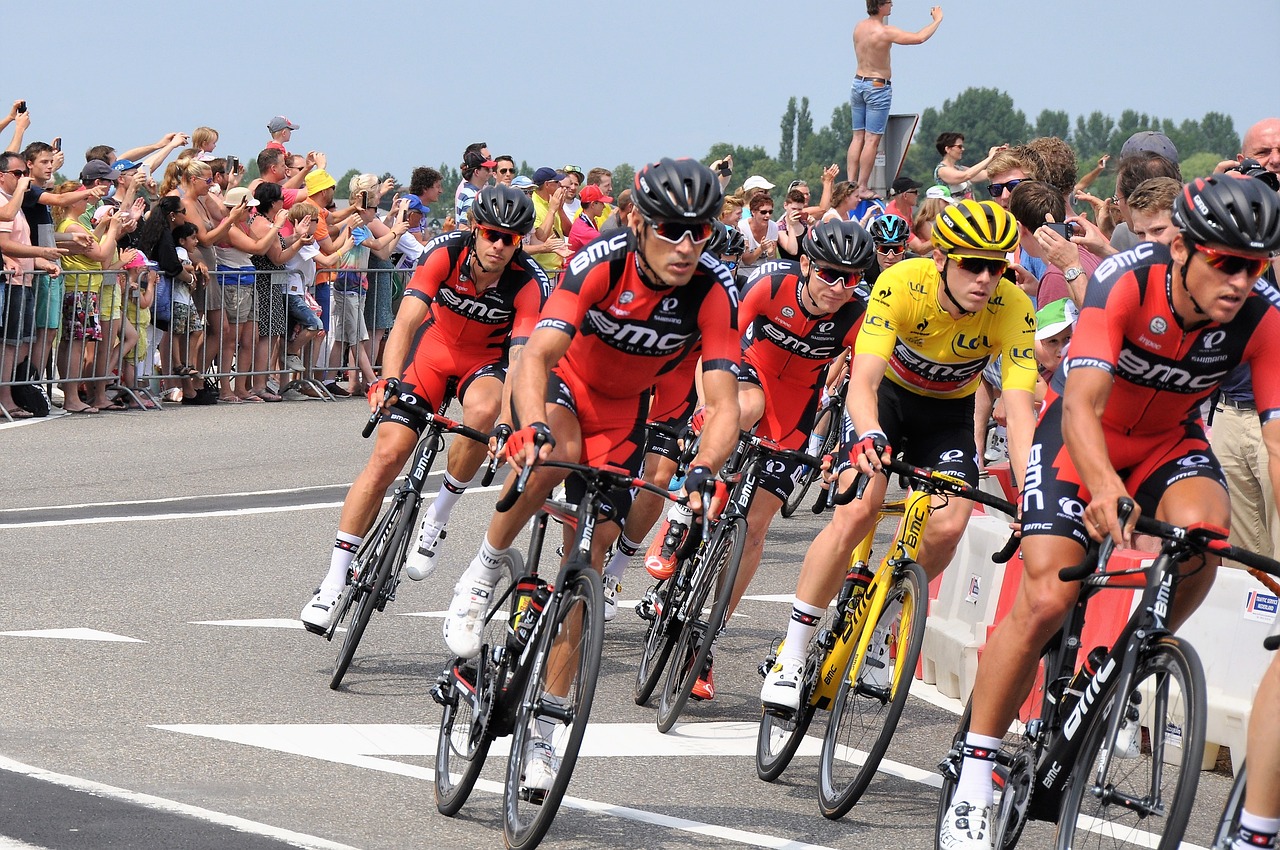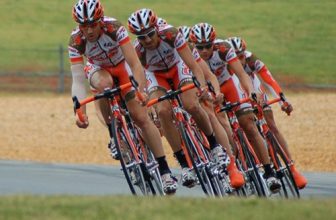Has the physical size of professional road race cyclist changed over the years

- General Classification (GC) Riders
- Sprinters
- Climbers
- Time Trialists
- Training Techniques
- Diet and Nutrition
- Technology
- Aerodynamics
- Anti-Doping Measures
- Pre-1980s
- 1980s-1990s
- 2000s-Present
- Data-Driven Training and Nutrition
- Genetic Screening and Biotechnology
- Innovations in Equipment
- Changes in Race Formats and Strategies
These are the riders vying for the win in stage races like the Tour de France. They need to be strong in the mountains and time trials, which tends to favor lighter weights. The ideal body type for these cyclists has remained fairly consistent, with the average height and weight not changing much over time. They’re usually not the biggest or smallest riders in the peloton, with a balance of power and weight necessary for the varied demands of a stage race. As of my knowledge cutoff in 2021, most GC riders were between 5’8″ and 6’0″ and weighed between 65 and 70 kg (143-154 lbs).
These are the powerhouses of the cycling world. Sprinters have typically been more muscular and heavier than their climbing counterparts, often resembling track athletes. They need this muscle mass to produce the explosive power needed in flat sprint finishes. Over the years, this category hasn’t seen a significant change in physical size either.
These are the cyclists who shine in the mountains. Climbers are typically shorter and lighter than their peers, as less weight is a significant advantage when fighting gravity. There’s a trend towards climbers being even lighter and leaner than they were in the past, which can be attributed to better understanding of diet, training techniques, and the importance of power-to-weight ratio in this discipline.
These cyclists require a balance of power and aerodynamics. Many successful time trialists are taller and have a lean build. There has been a trend towards optimizing body composition for aerodynamics, which sometimes means lower body fat percentages.
While there have been some changes in the body types of cyclists over the years, they have not been uniform across all types of racing. Moreover, the changes are not as much about height and weight as they are about body composition and power-to-weight ratio, factors heavily influenced by advances in training, nutrition, and equipment.
It’s important to note that advances in training techniques, diet, and technology have been pivotal in influencing the physique of professional cyclists over time.
The advent of sophisticated training methods such as high-intensity interval training (HIIT), strength and conditioning, and altitude training have enabled cyclists to fine-tune their bodies to their specific discipline. For instance, sprinters can focus on developing more muscle mass for explosive power, while climbers work on minimizing their weight for better climbing efficiency.
Over the years, the understanding of sports nutrition has significantly improved. Cyclists now adhere to stringent and tailored diet plans to optimize their body weight and composition. For example, a diet low in fats but high in carbohydrates can help endurance cyclists maintain energy levels over a long race. A protein-rich diet can help sprinters and time trialists build and maintain muscle mass. The use of supplements to aid in recovery and performance has also become common.
Technological advancements have allowed for more accurate tracking and measurement of a cyclist’s performance. Devices like power meters provide data that help cyclists and their coaches fine-tune training and race strategies. This improved understanding of performance metrics has helped cyclists better optimize their physique for their specific cycling discipline.
The increased focus on aerodynamics in cycling has also played a role. To gain an aerodynamic advantage, cyclists not only rely on sleek bike designs and equipment, but also strive to reduce their frontal area through body position and even their physique.
Stricter anti-doping measures have also influenced the physique of cyclists over the years. Historically, the use of performance-enhancing substances was prevalent in professional cycling. However, stronger regulations and more frequent testing have led to a cleaner sport, and this has had an impact on the athletes’ bodies.
The physical size of professional road race cyclists has not dramatically changed over the years. However, the way cyclists shape and train their bodies for optimal performance has evolved significantly, thanks to advancements in training techniques, diet, technology, and improved understanding of aerodynamics and power-to-weight ratios.
Let’s consider how these changes have manifested across different eras of professional road race cycling:
This era was characterized by less specialized roles within cycling teams. Riders often needed to be versatile, capable of climbing, sprinting, and time-trialling. Training methods were also less sophisticated, and nutrition was not as well-understood. As such, the physical size and composition of cyclists varied greatly.
This period saw an increase in specialization in roles within teams, and consequently, the physical attributes of riders started to diverge more significantly. Sprinters tended to be more muscular and heavier, climbers leaner and lighter, and all-around riders somewhere in between. This era also witnessed the rise of more rigorous training regimens and an improved understanding of sports nutrition, which helped cyclists fine-tune their physiques for their specialized roles.
In the modern era, cycling has become even more specialized and professional. Advances in technology, such as power meters, have allowed for a more precise understanding of the physical demands of each cycling discipline. This has enabled riders to train more efficiently and effectively, leading to greater optimization of body size and composition. For example, riders focusing on time trials might aim for a balance between power and aerodynamics, favoring a lean but strong build. Climbers often seek to be as light as possible to maximize their power-to-weight ratio.
In summary, while the physical size of professional road race cyclists has not drastically changed, the specialization of roles within the sport and the evolution of training methods, nutrition, and technology have led to a more optimized body composition for each discipline. The physical characteristics of riders today are more a product of their specific cycling roles and less about a generalized ‘ideal cyclist’ body type.
As road cycling continues to evolve, it will be interesting to see how the physical attributes of professional cyclists change in response to new training methodologies, technological innovations, and shifts in race strategies.
Looking ahead into the future, here are a few potential trends that might influence the physical size and composition of professional road race cyclists:
As mentioned before, modern technology like power meters and fitness trackers are allowing for a more precise understanding of cyclists’ performance and nutritional needs. In the future, we might see an even greater emphasis on data-driven training and nutrition programs, which could further optimize a cyclist’s body size and composition for their specific role.
Although this is speculative and potentially controversial, advancements in genetic screening could influence the physical characteristics of cyclists. If it becomes possible to identify genetic traits that favor endurance, power, or a fast metabolism, teams might recruit cyclists based on these traits. Similarly, biotechnological advancements might allow for more effective and personalized training and nutrition strategies.
Cycling equipment is continually evolving, with new designs aiming to be lighter, more aerodynamic, and more efficient. As these technologies advance, they may reduce the physical demands on cyclists, potentially influencing their physical size and composition.
The format of professional races and the strategies used by teams can also influence the physical attributes of cyclists. For example, if more emphasis is placed on flat, powerful stages in professional races, we might see an increase in the average size and strength of cyclists. Conversely, if races feature more mountainous stages, the importance of having a lean, light build could be further emphasized.
In conclusion, while the basic physical attributes required for professional road race cycling – strength, endurance, and a lean body composition – are likely to remain consistent, the specifics of cyclists’ body size and composition could continue to evolve. However, the core principle will remain the same: maximizing power output while minimizing weight, as this is the key to efficient cycling performance.








